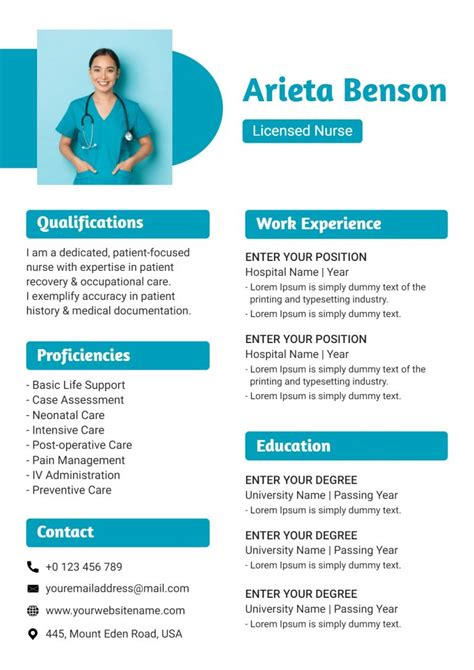Nursing License on Resume: What You Need to Know
Landing your dream nursing job starts with a compelling resume. One crucial element often overlooked is how to properly present your nursing license. This guide will walk you through everything you need to know about including your nursing license information on your resume, ensuring it strengthens your application, not weakens it.
Should I Put My Nursing License on My Resume?
Absolutely! Your nursing license is a critical credential, verifying your qualifications and legal right to practice. Omitting it could significantly hurt your chances, as it immediately raises questions about your eligibility. Recruiters and hiring managers need to see this information upfront to assess your suitability for the position.
Where to Place Your Nursing License Information on Your Resume?
The best place to include your nursing license is in the contact information section or a dedicated Licenses & Certifications section. Avoid burying it within your work experience; it's too important to be easily missed.
-
Contact Information: Adding your license number and state (e.g., RN #123456, CA) directly under your contact information is concise and effective. This is particularly useful if space is limited.
-
Licenses & Certifications Section: For a more comprehensive approach, create a separate "Licenses & Certifications" section. This allows you to list all relevant licenses, certifications, and credentials clearly and neatly, emphasizing your professional qualifications. This section often follows your contact information or summary/objective.
Example (Licenses & Certifications Section):
Licenses & Certifications
- Registered Nurse (RN), License #123456, California Board of Registered Nursing
- BLS Certified
- ACLS Certified
- NIH Stroke Scale Certified
What Information Should I Include?
When showcasing your nursing license, provide the following essential details:
- Your License Type: Specify whether you're a Registered Nurse (RN), Licensed Practical Nurse (LPN), or Licensed Vocational Nurse (LVN).
- Your License Number: This is your unique identifier, allowing employers to easily verify your credentials.
- The Issuing State (or Jurisdiction): Clearly indicate the state (or country) that granted your license.
- Expiration Date (Optional): Including the expiration date is beneficial, particularly if it's relatively close. This shows you're proactive in maintaining your license. However, it's not strictly necessary.
How to Format Your Nursing License Information?
Maintain consistency in formatting across your resume. Use bullet points for a clear and easy-to-read presentation in the "Licenses & Certifications" section. Keep it concise and avoid unnecessary details.
What if My License is Expired or Pending Renewal?
Be upfront about the status of your license. If it's expired, mention the expiration date and clearly state that you are actively working on renewal. If it's pending renewal, explain the situation concisely. Honesty is vital in such situations. Transparency shows responsibility and commitment to your profession.
Should I Include My NCLEX-RN Score?
No, you should not include your NCLEX-RN score on your resume. While a high score indicates competence, it's not a standard element of a nursing resume. Focus on your experience and qualifications, as these are more relevant to the hiring manager.
How Can I Verify My Nursing License Information Before Submitting My Resume?
Double-check your license number and other details against your official license documentation to avoid errors.
What if I Have Licenses in Multiple States?
List all your licenses, following the same format as mentioned above. Prioritize licenses relevant to the job location.
Conclusion
Presenting your nursing license correctly on your resume is crucial for a successful job application. By strategically including this key information, you demonstrate your qualifications and professionalism, increasing your chances of securing an interview and ultimately, your dream nursing position. Remember to be accurate, concise, and maintain a consistent format throughout your resume.

